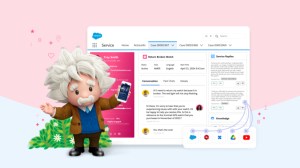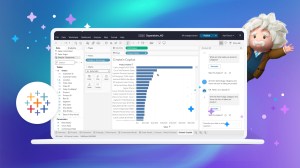Key Takeaways
- Strong holiday spending in late November contributed to flat U.S. growth in December
- Salesforce predicts Buy Online Pick Up In-Store (BOPIS) orders will account for one-third of online holiday sales after shipping cutoff
- AI on track to influence $194 billion in holiday sales for the full holiday season
Global online sales following Cyber Monday were up 1% year over year (YoY), representing $399 billion in total online holiday spend. U.S. online sales — largely flat in early November and December with an unexpected spike during Cyber Week — appeared to show both retailers and shoppers primarily relied on attractive discounts during Black Friday and Cyber Monday for their holiday season plans.
These and other Salesforce holiday insights come from commerce, marketing, and customer service data collected from 1.5 billion shoppers on the Salesforce Customer 360 platform. Among U.S online retailers, 29 of the top 30 use Salesforce.
Key holiday insights for the three weeks post Cyber Monday (Nov. 29–Dec. 18):
- As U.S. sales remain flat, the EU buoys global online growth:
- Since Nov. 1, EU online sales have grown 6% YoY, while U.S. online sales have grown 1% YoY.
- The contrasting numbers led to total online sales growth of 3% YoY globally (since Nov. 1).
- Notably, EU online sales increased by only 2% YoY during the three weeks after Cyber Monday. This marks a slowdown in the region following strong growth during Cyber Week (+9%) and during the first three weeks of November (+9%).
- As shipping cut-off window closes, shoppers turn to BOPIS: The Buy Online Pick Up In-Store (BOPIS) option has increased as shoppers look to avoid in-store lines and shipping deadlines ahead of peak holidays. BOPIS accounted for 25% of online orders during the three weeks following Cyber Monday, and reached 28% of all orders placed the weekend of Dec. 16.
- Salesforce predicts BOPIS usage will surge during Christmas Week (Dec. 18–Dec. 25): With the ground shipping window closed, one-third of online orders will be for BOPIS.
- AI drives shoppers to the buy button: 17% of all orders have been influenced by AI since Nov. 1.
- Salesforce now predicts that AI is on track to influence $194 billion in holiday sales for the full holiday season.
- The returns tsunami is back: Following a busy Cyber Week, the percentage of returns more than doubled in the week following and has remained high. As consumers become more discerning about discretionary spending, this increase indicates that consumers may be thinking twice about their purchases and returning those that don’t provide the value they’re looking for.
- Salesforce now predicts over $131 billion worth of orders purchased this holiday season will be returned in the next year.
- High discounts dwindle after Cyber Week: Following the highest Cyber Week discount rates since the start of the pandemic, the average discount rate fell in the first three weeks of December. The average discount rate of 27% during Cyber Week was reduced to 18%.
- Top December discounting categories:
- Home Furniture 25%
- General Apparel 24%
- Beauty Skincare 23%
- Top December discounting categories:
- New payment methods provide relief and convenience to holiday shoppers:
- Mobile wallet payments continue to see high adoption, with usage increasing 47% globally during the three weeks following Cyber Monday.
- Buy Now Pay Later usage in the U.S. increased by 4% YoY during this period.
- Mobile devices dominate digital shopping: Mobile accounted for 75% of digital traffic during the three weeks following Cyber Monday.
Salesforce perspective: “Seamless fulfillment and easy returns will be key strategies for retailers looking to increase loyalty and profitability through the remainder of the holiday. Retailers that are efficiently fulfilling online orders from physical stores, especially during these peak shopping days, can extend their shipping cutoff date and win market share.” – Rob Garf, VP and GM of Retail and Consumer Goods
Seamless fulfillment and easy returns will be key strategies for retailers looking to increase loyalty and profitability through the remainder of the holiday. Retailers that are efficiently fulfilling online orders from physical stores, especially during these peak shopping days, can extend their shipping cutoff date and win market share.
Rob Garf, VP and GM of Retail and Consumer Goods
Explore further:
- Visit the Shopping Insights HQ for additional holiday data
- View Cyber Week 2023 insights here
- Check out Salesforce’s earlier predictions for the holiday season
2023 Salesforce holiday insights and predictions methodology
Powered by Commerce Cloud, Marketing Cloud, and Service Cloud, Salesforce analyzed aggregated data to produce holiday insights from the activity of more than 1.5 billion global shoppers across more than 64 countries, with a focus on 12 key markets: the U.S., Canada, U.K., Germany, France, Italy, Spain, Japan, the Netherlands, Australia/New Zealand, the Asia-Pacific region (excluding Japan, Australia, and New Zealand), and the Nordics. This battery of benchmarks provides a deep look into the last nine quarters and the current state of digital commerce. Several factors are applied to extrapolate macroeconomic figures for the broader retail industry.
The prediction data that we present are from proprietary Salesforce research. The calculations we use blend first-party and third-party data, as well as several market assumptions, to generate the data points presented.
The Salesforce holiday predictions are not indicative of the operational performance of Salesforce or its reported financial metrics including GMV growth and comparable customer GMV growth.















